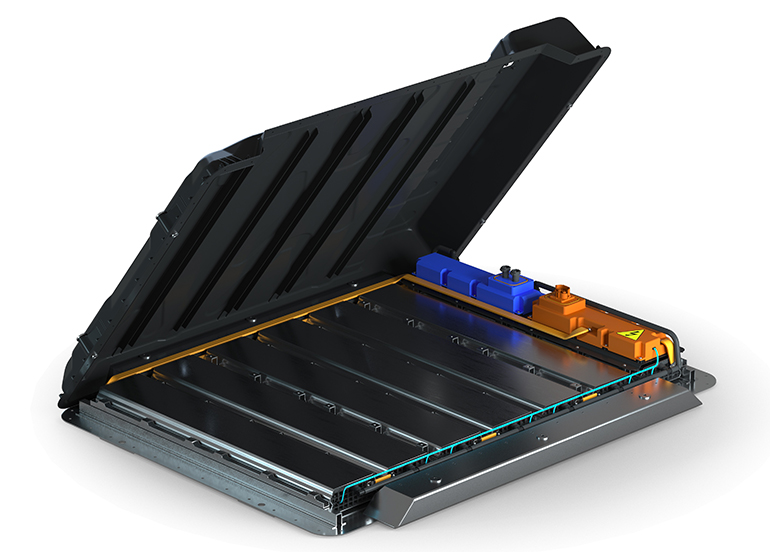
Lightweight, Low-Cost Battery System Developed for E-Mobility Applications
Carmakers continue to make strides in extending the range of electric vehicles, a key factor in enticing consumers to make the switch from their gas guzzlers. This can be achieved through improved battery storage capacity and energy recovery technologies. Another means to that end is by lightweighting components and, thus, reducing the amount of energy the car consumes. That is the mission of a German consortium formed in 2019 that has developed a housing and battery concept for electric vehicles that meets all requirements for mechanical performance, manufacturability, and safety while reducing unit weight by about 10%.
Consortium members Lorenz Kunstofftechnik, Forward Engineering, Evonik, Lion Smart, Vestaro, and recent recruit Minth, a Chinese carmaker that joined this year, have developed a series-suitable battery concept in three energy configurations that, they claim, equals or surpasses batteries currently on the market in terms of energy density, safety, and cost. Proper material selection, as is often the case, was crucial to the success of the project.
Evonik’s Vestalite epoxy hardener selected to optimize SMC.
Carbon fiber-reinforced sheet molding compounds (SMCs) can be used for this application but they are costly and usually not recyclable. Instead, the consortium opted to use Evonik’s Vestalite epoxy hardener to develop an SMC with a density between 1.5 and 1.7 g/cm3, said Peter Ooms, Chief Operating Officer at Lorenz Kunstofftechnik.
|
Image: Vestaro
 |
|
Using the diamine-based epoxy hardener Vestalite S from Evonik, Lorenz Kunststofftechnik developed a glass fiber–reinforced SMC suitable for the manufacture of battery housings for electric vehicles. Thanks to SMC technology, even comparatively complex geometries can be made in a single production step. |
“It has outstanding properties, like a bending strength >350 MPa, flexural modulus of elasticity >18,500 MPa, and impact resistance >150 kJ/m2,” said Ooms. By using an epoxy resin instead of the usual polyester resin, it was possible to eliminate other issues that may arise in working with glass fiber–reinforced SMC materials, he added. “With Vestalite S Epoxy Lorenz SMC, the molding material can be worked into complex geometries without adhering to the mold,” noted Ooms. The formulation reportedly has better mechanical properties than conventional SMC materials and features a very good fiber course in the molding process. Moreover, Lorenz has an established process for recycling glass fiber–reinforced SMC materials.
The partners chose aluminum for the support structure of the battery housing and Lion Smart’s supercell concept was applied to the batteries, resulting in fewer components and enabling fully automated production.
Extensive simulations conducted.
Extensive structural and safety simulations were carried out at Forward Engineering’s computer-aided engineering department. In particular, a thermal 2D simulation of the battery pack verified the insulating properties of the epoxy SMC housing. “Our material can withstand 10 minutes at 800°C without burning through, and its insulating properties protect surrounding components and materials from temperatures over 300°C,” said Ooms.
Lorenz also made multiple complex hardware demonstrators to verify the suitability of the material and the production process. “Using the diamine-based epoxy hardener Vestalite S, we were able to create a simple and fast-curing SMC material with the required mechanical properties,” said Ooms. “In our tests, curing times of three minutes were achieved without workpieces adhering to the mold.” Moreover, the SMC produces no styrene emissions and low VOC emissions.
Three energy configurations are now available: All-in weights of 412.1 kg at 65 kWh, 527.3 kg at 85 kWh, and 789.2 kg with 800 V at 120 kWh.

Leave a Reply